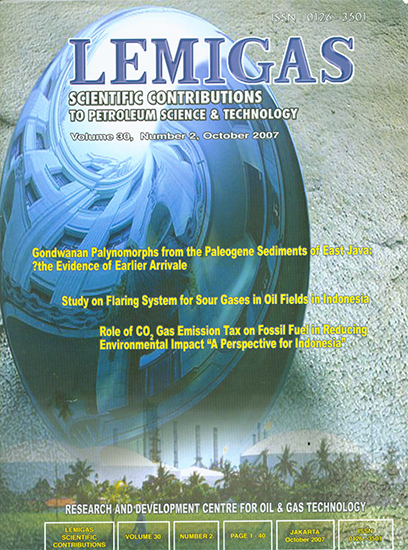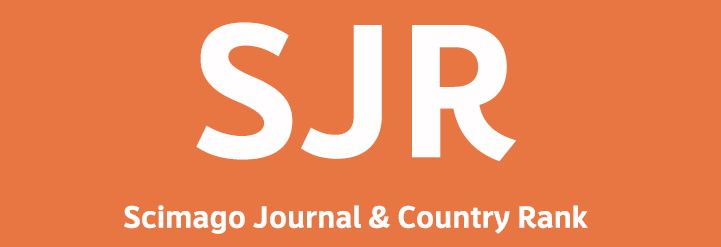ROLE OF CO2 GAS EMISSION TAX ON FOSSIL FUEL IN REDUCING ENVIRONMENTAL IMPACT “A PERSPECTIVE FOR INDONESIAâ€
DOI:
https://doi.org/10.29017/SCOG.30.2.982Keywords:
Carbon/emission tax, abatement cost and common & control.Abstract
In the year 2001, Indonesia was ranked 21st in producing CO2 emissions. In 1990 the
total emission of CO2 from the burning of fossil fuel was estimated at 83.8 million tonnes
and by the end of the year 2020 the total emissions are estimated to be 368.3 million
tonnes. Currently, Indonesia has no specific regulation in place for controlling CO2 emissions
either in the form of an act or government regulation.
Some approaches in controlling such emissions are through “common and controlâ€
and or “market based instrument†(sometimes this term is called “economic instrumentâ€).
Based on experience from developed countries, economic instrument in the form of carbon
tax or emission tax is preferred due to it’s effectiveness compared with the common
and control instrument.
This empirical study is intended to analyze the role of economic instrument in the form
of a carbon or emission tax on the energy of fossil fuel through a modified DICE (Dynamic
Integrated Model of Climate Change and the Economy). The DICE model is also
called a “Three –Box Model†or “Two Folded Modelâ€
By using some rate of social preference (R), the model outcome suggests that appropriate
optimal taxes for petrol and coal are if model using R value of 5%. Value of carbon tax
per ton in optimal condition for period of 1990-2019 is within the range $US3.90 – 40.35
or $US1.06 -11.00 USD CO2 per ton. The price is equivalent to $US 0.002 – 0.024 per
liter petrol and $US 1.95 -20.25 per ton coal.
Based on the model output it is indicated that carbon or emission tax with optimal
scenario has no significant impact on income per capita relative to “Base Caseâ€. Should
the government apply tax instruments with optimal scenario, revenue of emission taxes will
fall between $US 457.6 – 2,362.8 million for period 1990-2019. The revenue consists of
$US 376.1 – 1,585.6 million generated from petrol and $US 81.4 – 777.2 million from
coal.
References
Ackerman,Frank and Finlayson.,2005, The Economic
of Inaction on Climate Change: A Critique.
Global Development and Environment
Institute,Tufts University.
Baumert,A.Kevin,et.all.,2005, Navigating the
Numbers.Greenhouse Gas data and International
Climate Policy. World Resources Institute.
Behavioral Responses to Environmentally-Related
Taxes.,2000. Environment Directorate.
OECD. COM/ENV/EPOC/DAFFE/CFA(99)
/FINAL.
Babiker,Mustafa, et al.,1999, The Kyoto Protocol
and Developing Countries.MIT Joint Program
on the Science and Policy of Global Change.
Science Policy.
Beyond Kyoto.,2002, Energy Dynamics and Climate
Stabilization. International Energy
Agency.OECD/EIA.
Blades,Derek and Meyer,Jeroen.,1998, How to
Represent Capital in International Comparison
of Total Factor Productivity. OECD.Statistics
Directorate. Second Meeting of the Canberra
Group On Capital Stock Statistics.
Connor,David.,1996, OECD Development Centre
(Paris French). Applying Economic Instruments
in Developing Countries; From Theory
to Implementation.Special Report.
Fiddaman,Thomas.,1997, A System Dynamic Perspective
On an Influential Climate/Economiy
Model. MIT Sloan School of Management.
Nordhaus,William and Boyer,Joseph.,1999, Economics
Models of Global Warming. DICE and
RICE Model. Internet edition.
Nordhaus,William.,1992, Rolling the “DICE†: An
optimal transition path for controlling
greenhaouse gases. Resources and Energy Economics
,1993 27-50.North Holland.
Nordhaus,William and Boyer,G.Joseph.,1999,
Requiem for Kyoto: An Economic Analysis of
the Kyoto Protocol. KYOTO ECON
DOC.
Nordhaus,William.,2001, Global Warming Economics.
Science Compass, Vol 294.Policy
Forum:Cliamte Change.
OXERA report.,2002, A Social Time Preference
Rate for Use in Long-Term Discounting.
OXERA Consulting Ltd.Oxford OX1 4EH,UK.
Thomas.Charles., Tennant.Tessa and Rolls
Jon.,2000, The GHG Indicator: UNEP Guidelines
for Calculating Greenhouse Gas Emissions
for Business and Non Commercial Organizations.
Petroleum Report Indonesia. American Embassy
–Jakarta., 2003.
Petroleum Report Indonesia. American Embassy
–Jakarta.,2006.
The Green Book (printed 2004).Discount Rate,
Annex 6. http://greenbook.treasury.gov.uk/
annex06.htm.
Marland,Gregg,et.al. Oak Ridge National
Laboratory.University of North Dakota. Website:
http://cdiac.esd.ornl.gov/trends/emis/top2000.tot.
printed 11/8/2004
Downloads
Issue
Section
License
Copyright (c) 1970 SCIENTIFIC CONTRIBUTIONS OIL AND GAS (SCOG)

This work is licensed under a Creative Commons Attribution 4.0 International License.
Authors are free to Share — copy and redistribute the material in any medium or format for any purpose, even commercially Adapt — remix, transform, and build upon the material for any purpose, even commercially.
The licensor cannot revoke these freedoms as long as you follow the license terms, under the following terms Attribution — You must give appropriate credit , provide a link to the license, and indicate if changes were made . You may do so in any reasonable manner, but not in any way that suggests the licensor endorses you or your use.
No additional restrictions — You may not apply legal terms or technological measures that legally restrict others from doing anything the license permits.














